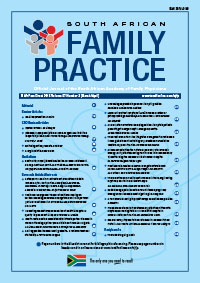Severe neuropathy due to inhalant abuse in adolescents from Pretoria
Keywords:
adolescents, inhalant abuse, severe neuropathy
Abstract
Background: Inhalation of volatile agents, or solvent abuse, is a dangerous pastime practised by many young adolescents in various parts of the world. Benzine, a distillate of petroleum, is a cheap and readily available solvent that is often inhaled or “sniffed” to produce a short-lived feeling of euphoria or disorientation. The aim of this report is to describe four adolescents with severe polyneuropathies secondary to chronic benzine inhalation who were seen at the Steve Biko Academic Hospital in Pretoria’s Neurology Department. Methods and patients: Four adolescent boys aged 15–18 years presented to the Department of Neurology from 2011 to 2013 with progressive weakness and muscle atrophy. Results: On examination all patients showed signs of a severe motor and sensory neuropathy. Two were wheelchair bound at the time of presentation and an initial diagnosis of Guillain-Barré syndrome was considered. Cerebrospinal fluid analysis was normal and electromyography showed severe mixed motor and sensory mainly axonal polyneuropathies in all patients. All investigations for causes of neuropathies were normal, but all patients eventually admitted that they had been abusing benzene by inhaling it for a period of at least six months. The inhalation occurred as a group activity, involving many children. Conclusion: Inhalant abuse appears to be a common practice amongst adolescents from Pretoria. It can lead to a catastrophic polyneuropathy, which should be considered in the differential diagnosis of a young patient presenting with a Guillain-Barre syndrome-type of clinical picture. Awareness amongst schools and drug programmes should be raised to prevent this tragic and highly disabling condition. (Full text available online at www.medpharm.tandfonline.com/ojfp) S Afr Fam Pract 2015; DOI: 10.1080/20786190.2014.975483
Published
2015-05-19
Section
Research Articles
By submitting manuscripts to SAFP, authors of original articles are assigning copyright to the South African Academy of Family Physicians. Copyright of review articles are assigned to the Publisher, Medpharm Publications (Pty) Ltd, unless otherwise specified. Authors may use their own work after publication without written permission, provided they acknowledge the original source. Individuals and academic institutions may freely copy and distribute articles published in SAFP for educational and research purposes without obtaining permission.

